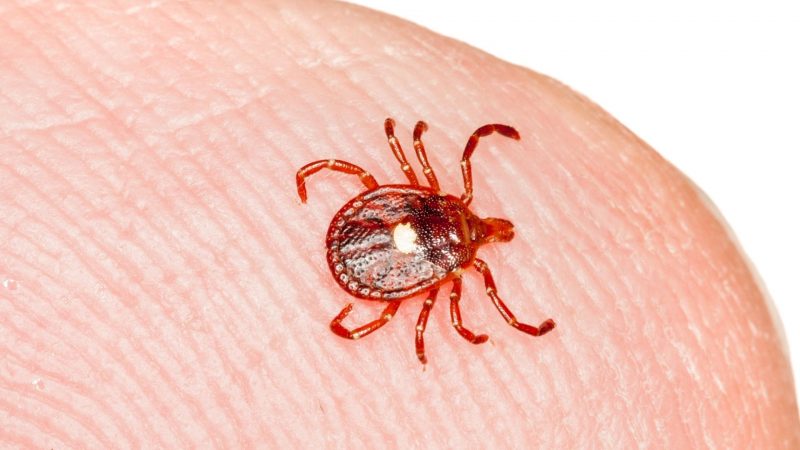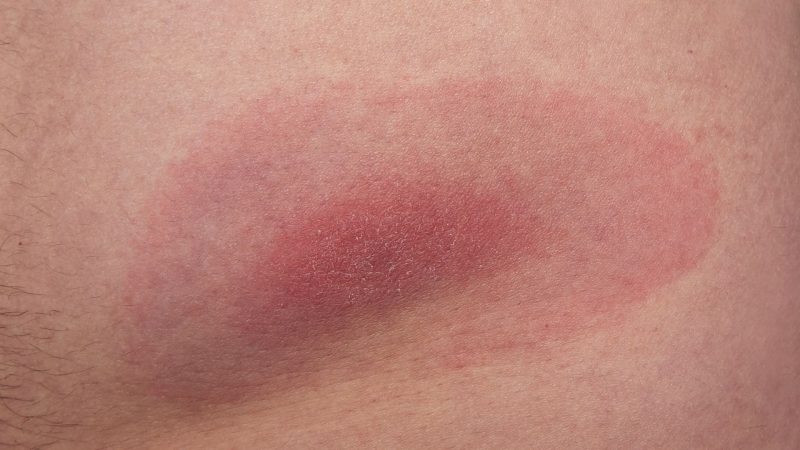You just got home from a long day of work, and your pet dog instantly greeted you. The dog kept on jumping and hopping, and in return, you played with your dog for quite a long time. It definitely removed the stress you feel, but it was cut short due to the itchy and tingling sensation lingering on your extremities. At that specific moment, you have discovered the culprit, and that is, a lone star tick harbored by your dog.
Should you worry about a lone star tick bite? You should be worried if bitten by a lone star tick as its bite can transmit several illnesses, such as Southern Tick-Associated Rash Illness (STARI), Ehrlichiosis, Rickettsiosis, Tularemia, and other viruses. It can persist from mild to severe symptoms that can be detrimental to humans and also to animals if not appropriately managed.
With the potential harm and danger that this arthropod may bring, it is just right to know the nature and characteristics of lone star ticks as well as the in-depth explanation of the diseases they carry, the modes of transmission, and the effective ways of managing its bite.
What Is a Lone Star Tick?

The lone star tick, also known as “Amblyomma Americanum,” is a member of the Family Ixodidae, Class Arachnida, and Phylum Arthropoda. This creature was first described by Carl Linnaeus, a Swedish botanist, in 1758. They cling to their hosts for a period of seven days or less until they are fully filled with blood. Lone star ticks have the capability to transmit numerous diseases to animals and humans through their bites.
What Does a Lone Star Tick Look Like?
The lone star tick derived its name from the bold white dot found at the back of adult females. They have eight legs, elongated mouthparts, and a more rounded body than other tick species. These ticks have an estimated length of ¼ inch to ½ inch but can be longer when fully filled with blood. Their color may range from tan to brown or dark red, and the white spot found at the back of the females usually has a white, cream, gold, or bronze tinge. On the other hand, the outer parts of the adult male ticks have a lighter shade.
Where Are Lone Star Ticks Found?
The lone star ticks are widely distributed around the southeastern, midwestern, and eastern parts of the US but may also be found in the country’s northern location. They are endemic on forest areas where thick underbrush or high grass are prevalent but can also lurk between forests and grasslands. These species can migrate to different sites by attaching to hosts and sucking on their blood.
Are Lone Star Ticks Dangerous?
Lone star ticks can be dangerous as they can transmit certain types of diseases to humans and animals. When you acquire diseases from the bites of lone star ticks, serious health complications may occur if the symptoms are not managed properly. If left untreated, some of these illnesses may lead to inflammation of the lungs and heart, meningitis, and bone infection. Also, allergic reactions obtained from their bites may cause severe anaphylaxis and possibly death if not given with immediate medical attention.
What Do Lone Star Tick Bites Look Like?

The bites from lone star ticks may look like a circular rash. You will not probably feel it at first, but it becomes noticeable once the reddish discoloration on the skin expands.
Do Lone Star Tick Bites Itch?
The substances found in the saliva of lone star ticks have the ability to cause itchiness and redness on the site of the bite. Also, the diseases they can transmit, such as Southern Tick-Associated Rash Illness and Alpha-Gal Syndrome, can lead to rashes that usually appear within a few days and eventually irritate the skin.
How Long Should Lone Star Tick Bite Itch?
The itch that may be caused by lone star tick bites may extend to longer periods such as two weeks or more.
What to Do After Lone Star Tick Bite?
Once it bites and attaches to your skin, it is advisable to use tweezers in pulling it by grasping the tick in a steady and upward direction. After it is removed, you can flush the tick down the toilet or put it in a plastic bag and dispose of it properly. Lastly, you should disinfect the area with soap and water and apply an antiseptic solution to clean it thoroughly.
Can You Get Sick From a Lone Star Tick Bite?
You can get sick from a lone star tick bite. The following are the diseases that they can transmit:
Southern Tick-Associated Rash Illness (STARI)
This is a disease characterized by a rash on the location of the bite that may expand to at least three inches or more. Other symptoms include fever, fatigue, headache, joint and muscle pain that may subside after taking antibiotics.
Ehrlichiosis
The lone star ticks can be a vector of “Ehrlichia chaffeensis,” the causative agent of this bacterial infection. Its symptoms are fever, severe headache, muscle pain, nausea, and vomiting. They may appear seven to fourteen days after the tick bite.
Rickettsiosis
This is a bacterial infection caused by a microorganism from the genus “Rickettsia.” If not treated immediately, it may lead to low white blood cells, drop platelet counts, and cause liver infections.
Tularemia
This is an illness brought about by “Francisiella tularensis.” It causes skin ulcers in the bite area and a fever that may reach as high as 104 degrees Fahrenheit. It could be very fatal if left unmanaged.
Heartland Virus Disease
The heartland virus can be lethal for immunocompromised and elderly individuals. Therefore, the symptoms of this disease, like fever, fatigue, and low white blood cells and platelet counts, should be monitored and managed right away.
Bourbon Virus Disease
This is an illness caused by the bourbon virus and has no known medicine as of the present time. Thus, the medical intervention of this disease is only limited to managing its symptoms which include fever, body aches, nausea, vomiting, and rash.
Alpha-Gal Syndrome
The lone star tick bite can trigger mammalian allergy or increased sensitivity to red meat. It may result in dizziness, breathing problems, or blood pressure drop if no prompt management is done.
How Long for Symptoms After Lone Star Tick Bite?
The duration of symptoms brought by diseases from lone star tick bites may vary from one illness to another. If the symptoms are not managed immediately, there is a probability that the condition will progress to an advanced stage. This will lengthen the course of treatment as the symptoms of these illnesses will worsen.
Do All Lone Star Tick Bites Cause Meat Allergy?
Not all lone star tick bites can cause meat allergies. If the lone star tick is a carrier of alpha-gal, a sugar found in the flesh of mammalian meat, a meat allergic reaction will probably be acquired by a host injected by the infected tick.
Can a Lone Star Tick Bite Cause a Sinus Infection?
Due to the capacity of lone star tick bites to cause Alpha-Gal Syndrome, sinus infections may also be obtained by an infected individual. A person who may acquire allergic reactions to red meat due to the disease may also experience sneezing, runny nose, or nasal congestion.
Do Lone Star Ticks Carry Lyme Disease?
They do not carry Lyme Disease. The rash that develops after being bitten by lone star ticks may be similar to the said illness but the bacteria responsible is not Borrelia burgdorferi, the causative agent of Lyme Disease.
Do Lone Star Ticks Bite Dogs?

Since lone star ticks may attach to animals as hosts, they can potentially bite dogs and transmit diseases to them. Thus, it is imperative to check and assess them for lone star tick infestation.
Summary
In conclusion, the saying “Small but terrible” is definitely an adequate description for lone star ticks. They may be minuscule creatures, but their ability to cause health problems is absolutely immense. Thus, getting rid of them must always be the top priority.
Related: How To Get Rid of Ticks in Yard | A Complete Guide
List of Sources
Tick Encounter: Lone Star Tick. The University of Rhode Island.
Holderman, C., Kaufman, P. (2020). Featured Creatures: Common Name: Lone Star Tick. University of Florida.
Lone Star Tick. (2021). Iowa State University.
Cooperative Extension: Tick Lab – Lone Star Tick. The University of Maine.
Tickborne Diseases of the United States: Tick Bites/Prevention. (2019). Centers for Disease Control and Prevention.
- How to Get Rid of Copperheads | Practical Guide - August 27, 2023
- How to Get Rid of Corn Snakes | What Makes Them Aggressive? - August 27, 2023
- How to Get Rid of Alligators | Safety Measures and Removal Methods - July 16, 2023
